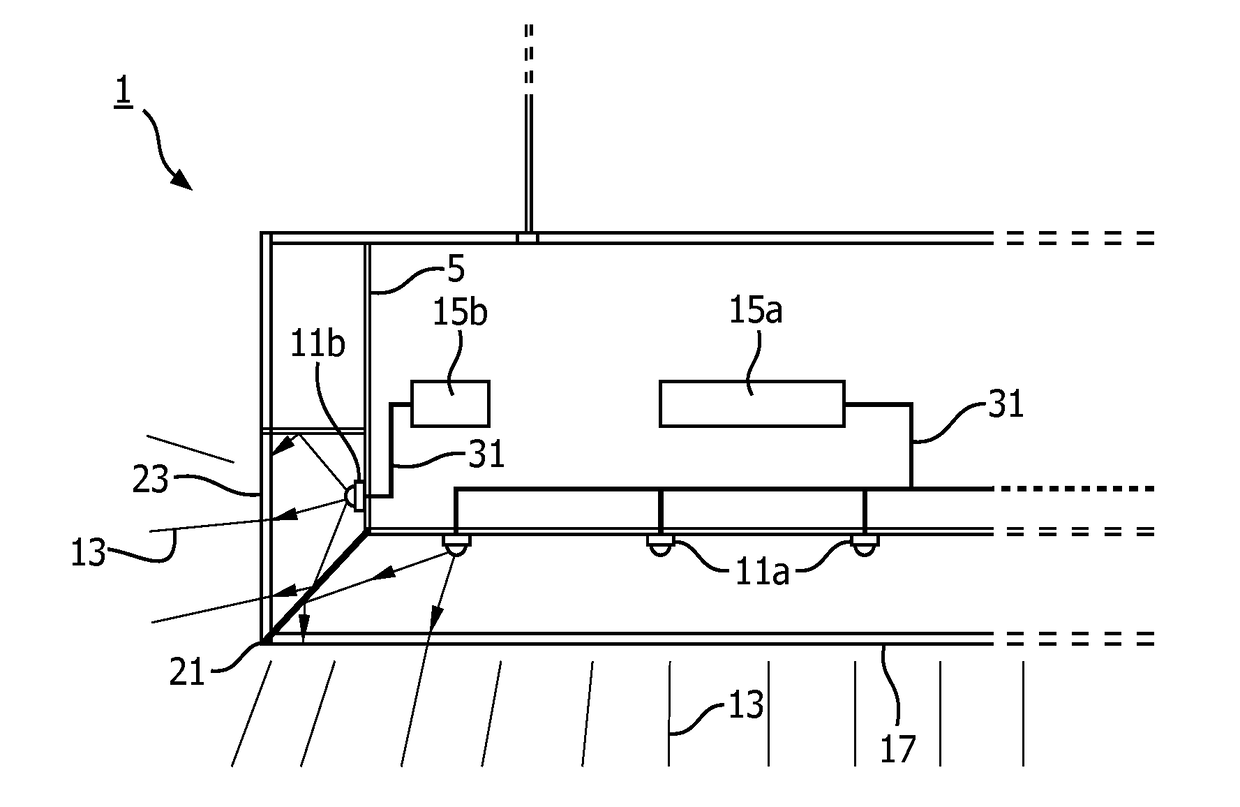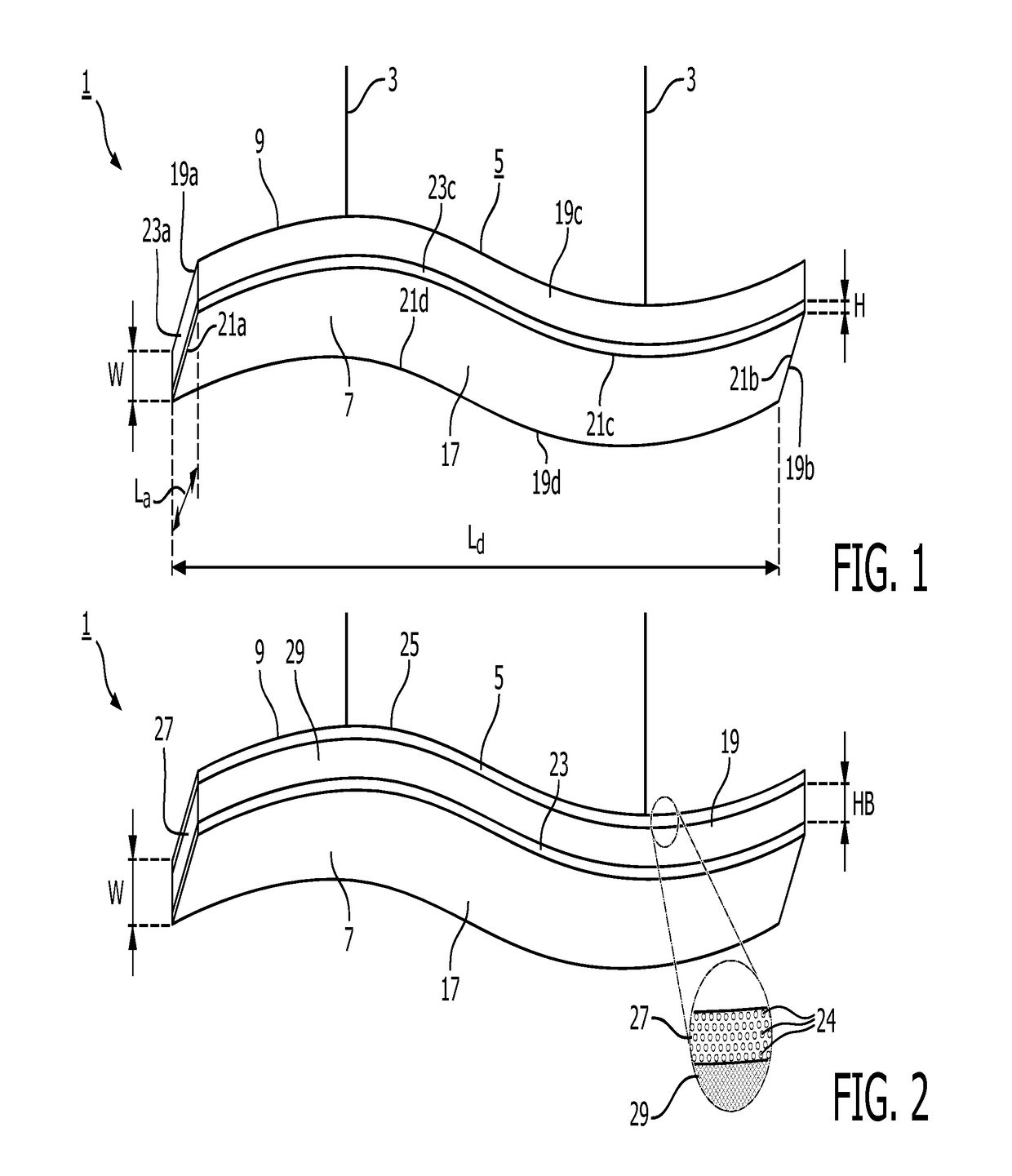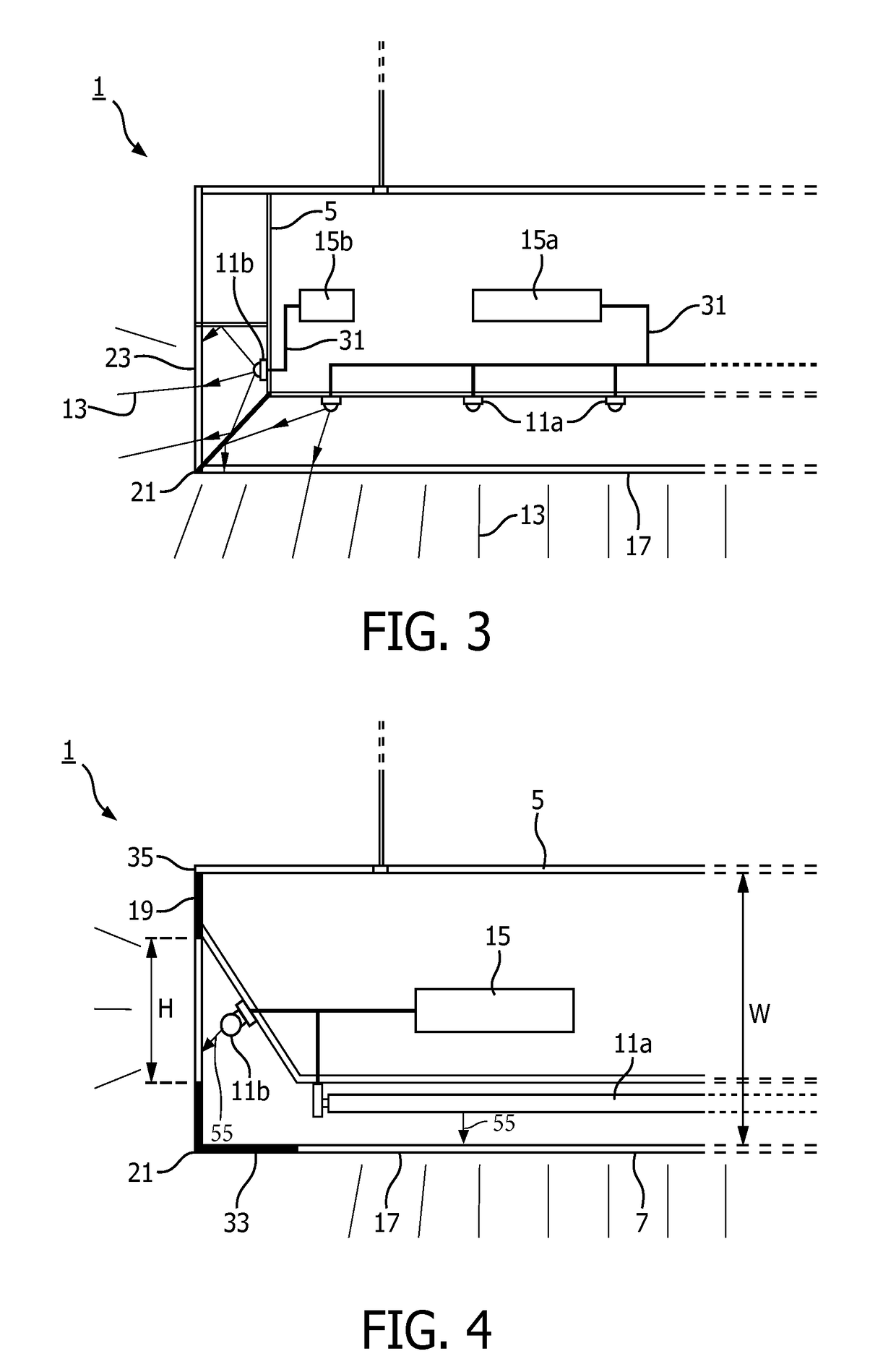Luminaire
a technology of a luminaire and a sidewall is applied in the field of luminaires, which can solve the problems of reducing requiring a relatively large thickness, and a relatively high sidewall, so as to reduce the risk of early failure of electronic components and reduce the thickness/height impression
- Summary
- Abstract
- Description
- Claims
- Application Information
AI Technical Summary
Benefits of technology
Problems solved by technology
Method used
Image
Examples
second embodiment
[0029]FIG. 2 shows a perspective view from below of a pendant luminaire 1 according to the invention. The luminaire comprises a housing 5 having a first main face 7 opposite a second main face 9 at a distance W and which housing accommodates a light source (not shown) for generating light source light (not shown). The first main face comprises a light exit window 17 and the second main face 9 comprises a further light exit window 25. The sidewall 19 comprises light emission windows 23 and a further light emission window 27 mutually separated by a light blocking band 29 having a height HB of 0.55*W. The further light emission window is formed by a large number, in this case about 25000, of relatively small light transmissive sub-windows 24 embodied as round dots. From relatively large distances these sub-windows merge into one large light emission window and virtually form one light transmissive area, while when being observed form relatively small distances they render the luminaire...
third embodiment
[0030]FIG. 3 shows a partial cross-section in length direction of a luminaire 1 according to the invention. The luminaire has a housing 5 in which a light source 11, i.e. in the figure an array of first Lambertian LED light sources 11a and an array of second Lambertian LED light sources 11b, is accommodated. The luminaire further has a light exit window 17 associated with the array of first light sources and has a light emission window 23 associated with the array of second light sources. The light emission window borders with its first edge 21 the light exit window. Each array of light sources is controlled by a respective controller 15a,b to independently control the intensity / brightness of the associated array of light sources and thus to independently control the luminous flux of light source light 13 to be issued from the light exit window respectively the light emission window. Wiring 31 can be relatively short as the controller can be located close to its associated light sou...
fourth embodiment
[0031]FIG. 4 shows a partial cross-section of a luminaire 1 according to the invention similar to the cross section of FIG. 3. The light source 11 is accommodated in the housing 5 and in this embodiment comprises a pair of first elongated fluorescent tubes 11a as a first light source and a pair of second elongated fluorescent tubes 11b as a second light source. The fluorescent tubes 11a and 11b each are provided with a respective reflective coating on a respective side facing away from an associated window to render the fluorescent tubes 11a and 11b to have a main light issuing direction 55 towards the associated window. All the light sources are controlled by a single controller 15 and not independently controllable. The first main face 7 has a light exit window 17 which is surrounded by a circumferential non-light emitting region 33. The sidewall 19 has a light emission window 23 which neither borders neither the first edge 21 nor a second edge 35 of the sidewall, and which has a ...
PUM
 Login to View More
Login to View More Abstract
Description
Claims
Application Information
 Login to View More
Login to View More - R&D
- Intellectual Property
- Life Sciences
- Materials
- Tech Scout
- Unparalleled Data Quality
- Higher Quality Content
- 60% Fewer Hallucinations
Browse by: Latest US Patents, China's latest patents, Technical Efficacy Thesaurus, Application Domain, Technology Topic, Popular Technical Reports.
© 2025 PatSnap. All rights reserved.Legal|Privacy policy|Modern Slavery Act Transparency Statement|Sitemap|About US| Contact US: help@patsnap.com



